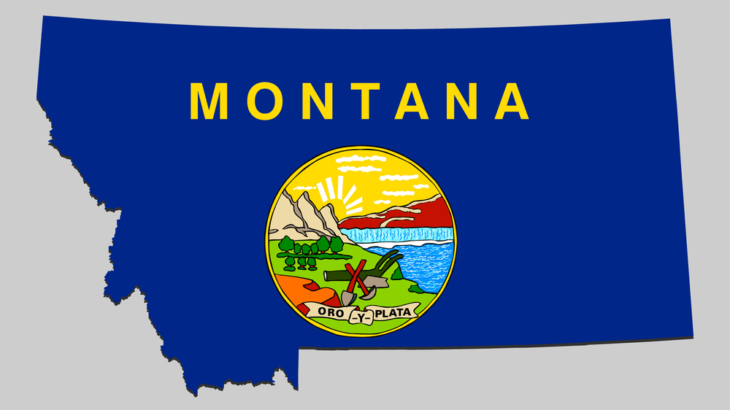Big Sky Country of Montana: History and Statehood
LISTEN ON SOUNDCLOUD:
Native American peoples lived in the area of present-day Montana for an unknown period of time before the arrival of the first Europeans in the 18th century. Most of present-day Montana was included in the Louisiana Purchase, which President Jefferson completed in 1803. The next year, President Jefferson commissioned the Lewis and Clark Expedition. Soon after, Catholic missionaries entered Montana. Beaver trappers followed shortly thereafter. Through the first twenty years of the 19th Century, the Salish people learned about Christianity because of their contact with the Iroquois people and with Jesuit priests. In the 1830s, the Salish people began sending emissaries to Jesuits in St. Louis, Missouri to request that a “blackrobe” (Jesuit priest) be sent to them in present-day Montana. The blackrobes were finally able to send a priest to minister to the Salish people in 1841.
Between 1848 and 1864, parts of present-day Montana were included in several U.S. territories, including the Oregon, Washington, Dakota, and the Idaho Territories. Montana was the site of the battle between the Sioux people and the U.S. Army, which we often refer to as “Custer’s Last Stand,” and it carries a lively history typical of the Old West.
Like many western states, the discovery of gold had a lot to do with Montana’s early days and its admission to the Union as a state. Congress designated Montana a territory after gold was discovered in 1862 by a fur trapper who, it is rumored, attempted to keep his discovery a secret to preserve the area for fur trapping. Two decades later, railroads made their way across Montana, and, if it wasn’t already, the state fully entered the throes of western expansion. Nicknamed the “Treasure State,” Montana became the 41st state in 1889. The state motto, “Oro y Plata,” translates “Gold and Silver.”
Montana’s Constitution was re-written in 1972 and contains a Declaration of Rights which reads much like the federal Bill of Rights. It contains protections for religion, speech, and the press, as well as prohibitions on ex post facto laws and on unreasonable searches and seizures, to name a few. The freedom of religion provision, for instance, closely follows the U.S. Constitution’s First Amendment Establishment and Free Exercise Clauses: “The state shall make no law respecting an establishment of religion or prohibiting the free exercise thereof.”
In 1916, Montana suffragist, Jeanette Rankin, became the first female member of U.S. Congress. During the Great Depression, President Franklin D. Roosevelt’s New Deal brought new projects and agencies to Montana and ushered in Montana’s first reliance on federal spending—a reliance that continues to this day. In its early days, natural resources were the state’s primary economic boon.
Montana, known to many as the “Big Sky” state, is the fourth-largest U.S. state by area and boasts many scenic areas. Flathead Lake is the largest freshwater lake between the Pacific Ocean and the Mississippi River. The Rocky Mountains run right through the state, although the average elevation of Montana is only 3,400 feet. Nearly 500 bison live in National Bison Range, which was established for their preservation. Montana’s seven Indian reservations host eleven tribal nations. Established in 1872, Yellowstone National Park is the first National Park in the United States.
Recently, agriculture and tourism have risen to prominence in Montana’s economy. In June 2019, a Montana court case brought new attention to the state when the U.S. Supreme Court granted certiorari to a religious liberty case called Espinoza v. Montana. There, the state of Montana is being sued for refusing, based on its Blaine Amendment, to allow religious schools to participate in a scholarship program. (Blaine Amendments prohibit the expenditure of public funds directly to educational institutions with religious affiliations.) The case is highly anticipated in light of Trinity Lutheran v. Comer, which ruled on narrow grounds that religious groups cannot be barred from participation in widely available public programs simply because they are religious. Espinoza v. Montana will test whether Blaine Amendments will survive and, if so, in what form.
Montana has a rich heritage that began long before it became a state. From Native American cultures to the gold rush to its mountainous beauty and expansive plains, it has been a land filled with excitement and wonder. Today’s Montana carries the echoes of the past in its vibrant western roots, and it offers anticipation of a dynamic future as new industries establish leading roles for the future.
Brad Bergford earned his BA in Political Science and Pre-Law at the University of Colorado at Colorado Springs. He earned his juris doctorate from the University of Denver, where he was active in several student bar associations, including the Student Trial Lawyers Association, the Federalist Society, and Christian Legal Society, which he served as President. After law school, Brad clerked for the Honorable Philip McNulty where he authored court opinions in a number of cases on subjects ranging from family law to constitutional law. Brad is Chief Executive Officer of Colorado Family Action/CFA Foundation, and he has his own civil litigation practice, which focuses on constitutional issues. Brad is an Alliance Defending Freedom Blackstone Fellow and Allied Attorney, and he serves as President of National Lawyers Association’s Colorado chapter.
Click Here to have the NEWEST essay in this study emailed to your inbox every day!
Click Here to view the schedule of topics in our 90 Day Study on Congress.




Join the discussion! Post your comments below.
Your feedback and insights are welcome.Feel free to contribute!